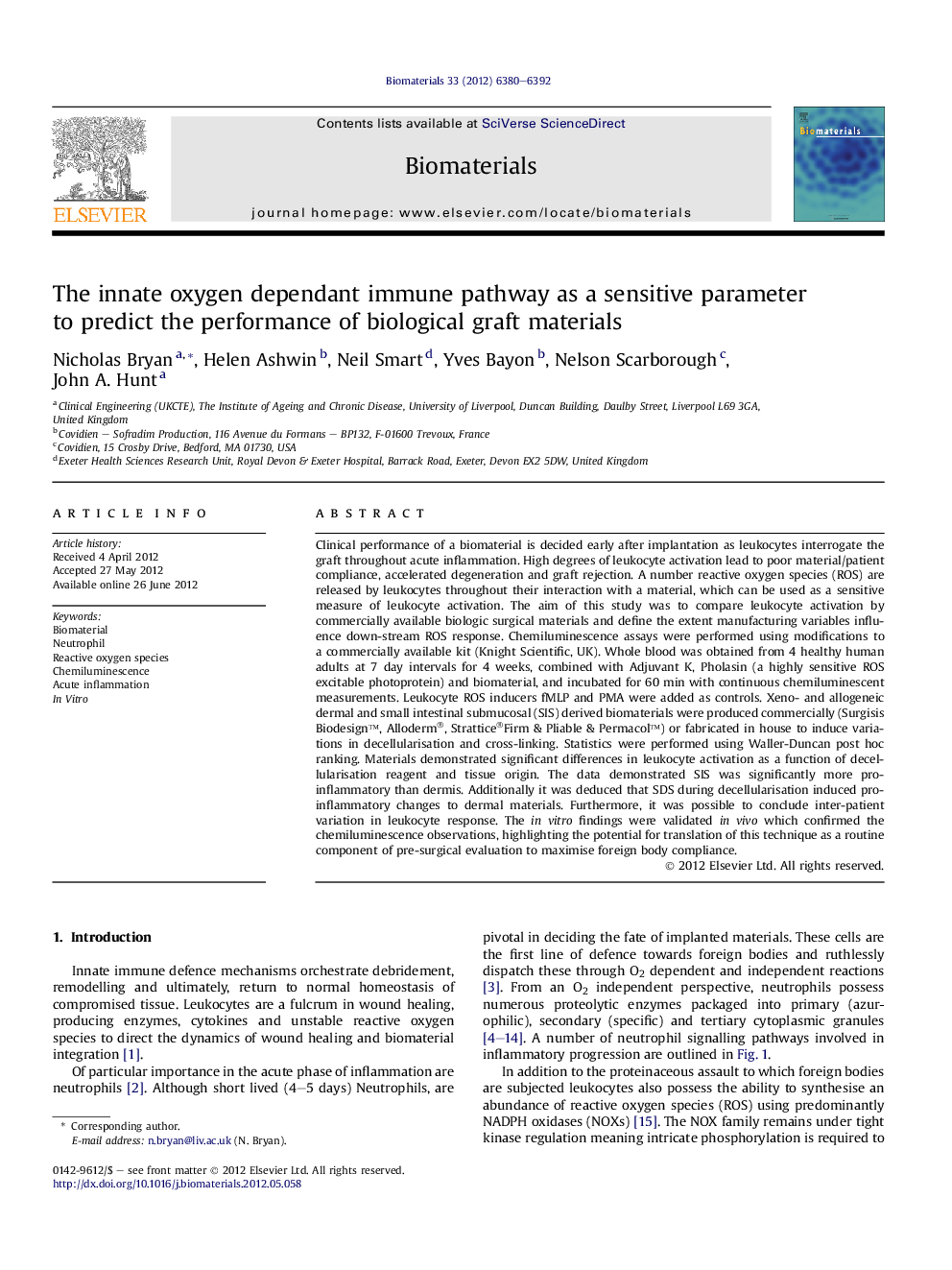| Article ID | Journal | Published Year | Pages | File Type |
|---|---|---|---|---|
| 6565 | Biomaterials | 2012 | 13 Pages |
Clinical performance of a biomaterial is decided early after implantation as leukocytes interrogate the graft throughout acute inflammation. High degrees of leukocyte activation lead to poor material/patient compliance, accelerated degeneration and graft rejection. A number reactive oxygen species (ROS) are released by leukocytes throughout their interaction with a material, which can be used as a sensitive measure of leukocyte activation. The aim of this study was to compare leukocyte activation by commercially available biologic surgical materials and define the extent manufacturing variables influence down-stream ROS response. Chemiluminescence assays were performed using modifications to a commercially available kit (Knight Scientific, UK). Whole blood was obtained from 4 healthy human adults at 7 day intervals for 4 weeks, combined with Adjuvant K, Pholasin (a highly sensitive ROS excitable photoprotein) and biomaterial, and incubated for 60 min with continuous chemiluminescent measurements. Leukocyte ROS inducers fMLP and PMA were added as controls. Xeno- and allogeneic dermal and small intestinal submucosal (SIS) derived biomaterials were produced commercially (Surgisis Biodesign™, Alloderm®, Strattice®Firm & Pliable & Permacol™) or fabricated in house to induce variations in decellularisation and cross-linking. Statistics were performed using Waller-Duncan post hoc ranking. Materials demonstrated significant differences in leukocyte activation as a function of decellularisation reagent and tissue origin. The data demonstrated SIS was significantly more pro-inflammatory than dermis. Additionally it was deduced that SDS during decellularisation induced pro-inflammatory changes to dermal materials. Furthermore, it was possible to conclude inter-patient variation in leukocyte response. The in vitro findings were validated in vivo which confirmed the chemiluminescence observations, highlighting the potential for translation of this technique as a routine component of pre-surgical evaluation to maximise foreign body compliance.
